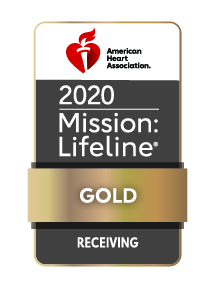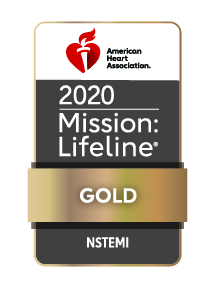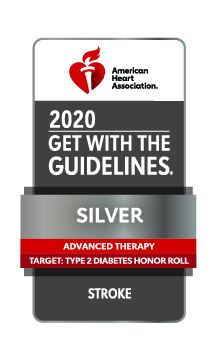Aspirus St. Luke's Honored with 3 National Awards for Stroke & Heart Attack Care
 St. Luke’s is honored to have earned three awards from the American Heart Association’s (AHA) Mission: Lifeline Program.
St. Luke’s is honored to have earned three awards from the American Heart Association’s (AHA) Mission: Lifeline Program.
St. Luke’s has received the 2020 Mission: Lifeline NSTEMI Gold Quality Achievement Award, Mission: Lifeline Gold Receiving Quality Achievement Award and AHA/American Stroke Association’s Get With The Guidelines–Stroke Silver Quality Achievement Award.
St. Luke’s earned the awards for heart attack care for its commitment and success in implementing specific quality improvement measures outlined by AHA for the treatment of patients who suffer severe heart attacks. The award for stroke achievement recognizes St. Luke’s dedication to ensuring stroke patients receive the most appropriate treatment according to nationally recognized, research-based guidelines.
“When people have the unfortunate experience of having a heart attack or stroke it is our goal to deliver the highest standard of care so our patients experience the best outcomes,” Dr. Scott Mikesell, director of St. Luke’s Cardiac Cath Labs and co-chair of Mission: Lifeline Minnesota said. “Practicing the guidelines set by Mission: Lifeline allows us to strive for and achieve excellence.”
Each year in the United States, more than 250,000 people have a STEMI, or ST-segment Elevation Myocardial Infarction. It is the deadliest type of heart attack and is caused by a complete blockage of blood flow to the heart. To prevent death, it’s critical to immediately restore blood flow, either by surgically opening the blocked vessel or by giving clot-busting medication. The AHA’s Mission: Lifeline program’s goal is to reduce system barriers to prompt treatment for heart attacks, beginning with the 911 call and continuing through hospital treatment.
To further enhance cardiac care, St. Luke’s will open new Cardiac Cath Labs on Tuesday, August 25, as part of its Health Forward Initiative. The Cath Labs offer cutting-edge technology for patients and world-class imaging capabilities. There’s also a recovery area, allowing the team to continue caring for patients within the space immediately following a procedure. Most importantly, it is right next to St. Luke’s new Emergency Department and helistop. That means saving precious time and treating patients faster than ever before.



